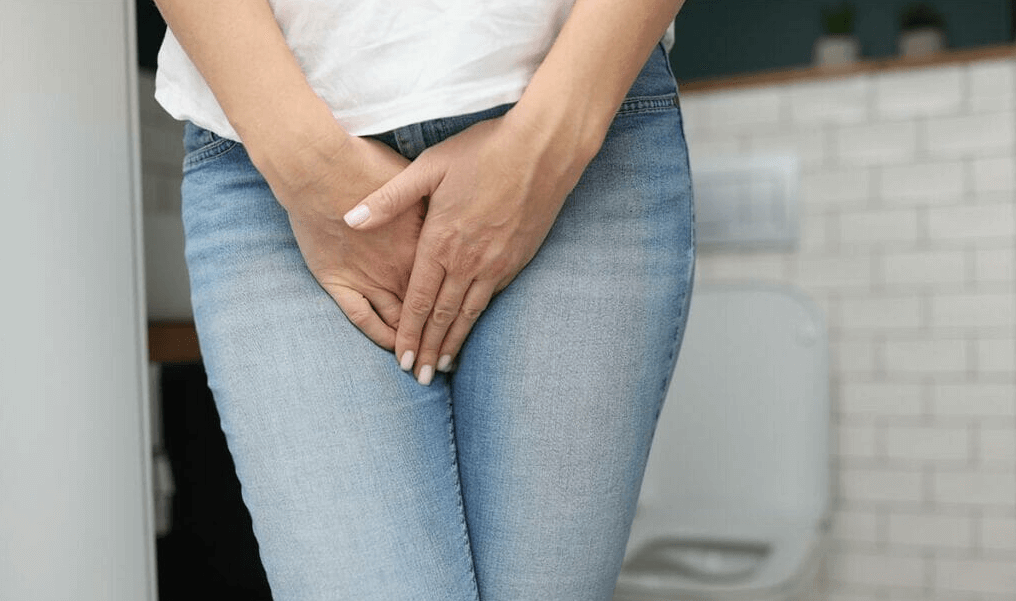Urinary Incontinence & Pelvic Floor Therapy

“Pelvic Floor Muscle Training is effective in improving symptoms and reducing involuntary urine leakage across various types of Urinary Incontinence (UI), supporting its inclusion as a first-line conservative treatment for women”- Effectiveness of Pelvic Floor Muscle Training on Quality of Life in Women with Urinary Incontinence: A Systematic Review and Meta-Analysis
Urinary incontinence, the involuntary leakage of urine,is a common condition affecting both older and younger adults. The 5 main types include stress, urge, mixed, overflow, and functional incontinence. Current treatments are diverse and include non-invasive methods like lifestyle changes and pelvic floor physical therapy, medical management using pharmaceuticals, devices, or injections, and a variety of surgical options.
These are the 5 main types of urinary incontinence and what causes them:
1. Stress Incontinence is when sudden pressure applied to your bladder, such as a cough, sneeze, laugh, exercise, lifting something heavy, or straining prompts leakage. This happens because the pelvic floor muscles that hold urine in (the sphincter) or support the bladder are weak and explains why it’s so common after pregnancy or childbirth, and in women who do high-impact sports. In men, it often occurs after prostate surgery for the same basic reason, muscle weakness.
2. Urge Incontinence is when you sense a sudden, strong need to urinate and leak urine before you can get to the toilet. Sometimes the leak might occur prior to having an urgency to empty your bladder. This happens because your bladder muscle contracts suddenly or too strongly, which is often referred to as an overactive bladder. This can be prompted by bladder irritants, changes to the walls of the bladder, or neurogenic issues such as with conditions like stroke or Parkinson’s disease.
3. Mixed incontinence means you experience a combination of both Stress and Urge incontinence. It happens because you have issues like muscle weakness (from Stress) and an overactive bladder muscle (from Urge) at the same time. Usually, symptoms from one type show up more strongly than the other.
4. Overflow Incontinence is when your bladder is unable to fully empty and becomes too full, leading to leakage of urine. It’s a result of your bladder muscle insufficiently squeezing empty, or blockage of the flow of urine out of the bladder. Generally this can stem from nerve interference due to diabetes, multiple sclerosis, or spinal cord injuries, etc. or blockages like an enlarged prostate in men or severe pelvic organ prolapse in women (left untreated this can cause serious harm to the kidneys).
5. Functional Incontinence is when you leak urine because you can’t physically get to the toilet in time to urinate. This is caused by mobility issues or mental/environmental barriers that prevent you from reaching the toilet when you need to go. Elderly individuals with severe arthritis might leak urine because their mobility issues prevent them from reaching the bathroom in time or people with dementia could experience functional incontinence if they become confused and cannot navigate their way to the toilet. Also, functional incontinence is more likely to affect menopausal and postmenopausal women, due to these age-related factors rather than menopause itself. However the good news is “Pelvic Floor Muscle Training is effective for managing urinary incontinence in menopausal women, with analysis showing a 92% chance of significant improvement compared to controls”. – European Journal of Obstetrics & Gynecology and Reproductive Biology
Pelvic floor physical therapy is a specialized, nonsurgical treatment that aims to help you regain control of your bladder and reduce or eliminate leakage. Every patient’s needs are unique and all treatment plans are custom-tailored; this information is not intended as a prescribed treatment plan for any specific individual. Here is a breakdown of the approach with pelvic floor physical therapy:
Physical therapy treatment for urinary incontinence begins with a comprehensive assessment. The initial evaluation will look at your medical history and a detailed history of your symptoms, bladder habits, fluid intake, and overall general health. This will be followed by a physical assessment to evaluate the strength, endurance, coordination, and any tension or tenderness of your pelvic floor muscles. Then, an external evaluation will look at your posture, breathing, and surrounding core and hip musculature. Generally this is sufficient to develop a treatment plan aligned to the type of incontinence you’re experiencing.
A significant part of any treatment plan is education. You will learn about your pelvic floor anatomy, how your bladder works, common triggers, how muscles support your bladder and their role in managing incontinence. You’ll gain insight into how lifestyle, diet, and good bladder practices—such as using proper techniques for emptying your bladder and going to the bathroom on a schedule—as well as the connection between constipation and bladder function, all play a role in bladder health.
The main part of your treatment plan focuses on Pelvic Floor Muscle Training (exercises). You’ll learn how to correctly isolate, squeeze, and relax your pelvic floor muscles. These exercises are designed to make your muscles stronger for better support and bladder control, build their endurance so they don’t fatigue easily, and improve their coordination so they can react quickly when you need them to. Exercises for supporting muscles like your core, glutes, and hips may also be included.
If your assessment finds muscle tightness, painful spots (trigger points), or scar tissue that keeps your muscles from working correctly or causes pain or urgency, a manual therapy technique like soft tissue massage can help. These hands-on methods can improve your muscles’ ability to help with bladder control, and we may also talk about using medical devices, such as biofeedback.
Please remember that urinary incontinence is a highly personal condition, and treatment approaches are always custom-tailored because every patient is unique. This means the path to managing your symptoms can vary widely depending on your specific circumstances. To discuss your individual situation and receive a more precise overview of what your potential treatment plan could involve, I invite you to schedule a free discovery call. Sharing your unique circumstances during this call will allow me to provide a more accurate idea of how I might be able to help you.
Learn More

“…..She [Dr. Kim]…is extremely knowledgeable, innovative and thorough in her treatments and explanations….” – A.S
“…Helen is an excellent physical therapist, whose holistic approach helped me improve my overall health and well-being..” – C.C.
“…Helen helped me through my pregnancy with twins and post-partum with everything from terrible back pain to fixing my severe diastasis recti…” – L.G.
“…She [Dr. Kim] is one on one and focuses on your individual needs, I have been going to her for ten years and there is nobody in nyc I trust more…”